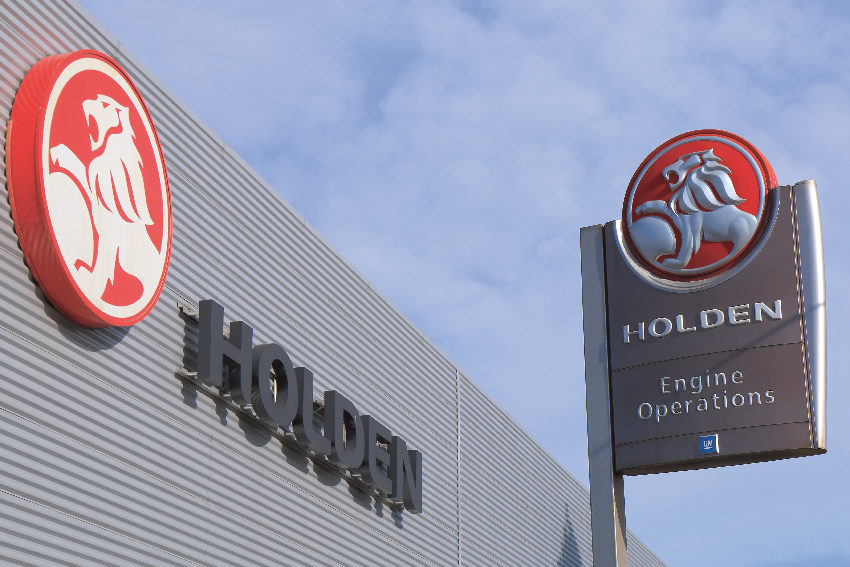End of the road for the auto industry? Yes and no

The closure of General Motors Holden (GMH) and the collapse of a significant part of its supply chain mark the end of the Australian automotive manufacturing industry. We might still make automotive parts but we won’t make cars, at least not for the time being.
This is a tragic loss, all the more so because of the acrimonious national policy debate that precipitated it. The automotive manufacturing industry in Australia enjoyed bi-partisan support for decades. Incredibly, it became a political play-thing of an over-zealous Abbott Government. The rest, as they say, is history.
When GMH ceases production on October 20 it will be the last of the big three Australian
automotive manufacturers to close its doors, bringing a proud history of automotive manufacturing to an end. The closure of an entire industry is rare in Australia. When you lose such a significant manufacturing capability as automotive, your ability to build other things is compromised. In other words, it will be harder to maintain the skill and capability base that we need to accelerate the growth of knowledge intensive forms of manufacturing.
We now need to urgently accelerate the uptake of advanced manufacturing technologies and processes to arrest decline in other sector of manufacturing. Germany is doing this through its so-called Industry 4.0 agenda – an aggressive ‘made in Germany’ strategy designed to ensure that manufacturing remains one of its foundational industries for decades to come.
Why? Because, a sophisticated manufacturing sector is research and development intensive and that helps to underpin demand for high-skilled employment. All of this helps to ensure that we have rising rather than declining living standards.
Now that the automotive closure is finally upon us we need to understand what its potential impacts are. A great deal has happened since the closure announcement, nearly two years ago. Rather than facing one large shock we have experienced a process of gradual closure. This has made it easier to manage but it has also made it very challenging for suppliers to adjust.
The automotive manufacturing workforce has been in sustained decline in South Australia since the announcement. Back in 2013 there were around 7500 people employed in automotive. Now there are probably around 2500 to 3000. This is still a very large number, particularly if you take account of the potential flow on impacts that closure can have on other sectors and the state economy.
Past experience suggests that while many will find work, many will struggle to fine secure work. Others will experience long periods of under-employment and unemployment. Those with qualifications will find it easier to make the transition while those without credentials can find it very difficult. Many in the automotive manufacturing industry have made successful transitions already and others still working in the industry will be very well positioned to follow them into rewarding new jobs. Each person has different prospects and opportunities. Some have been provided access to a range of support services while others have not had access to any. Not all companies have been open to easing the transition for their workers while others acted early. All of this and much more will have a bearing on whether individual workers make successful transitions or not.
For a while it looked as though unemployment could rise to eight per cent in official terms before the closure. Fortunately it has been in sustained decline, partly driven by a lower labour force participation rate but also by strong growth in the services sector and modest growth rather than decline in manufacturing employment. Underemployment remains high, however, reflecting the growth of part-time and casual employment in the services sector and stalled full-time employment growth. Overall we are in a better position than many of us feared we might be, particularly because the State Government has maintained public investment at relatively high levels and the Federal Government has become a more active co-investor in new projects. This détente must be sustained in the interests of generating a higher rate of employment growth than would otherwise be the case.
Any closure on the scale of the automotive manufacturing industry is going to do potential short and medium term damage – to individuals, families and communities. Our principal concern must be the workers losing their jobs. The job of supporting them will not be done by October 20. The need for support will remain but become more complicated as people become more difficult to stay in contact with. This is a challenge for government and the companies involved. They must begin a new phase in the delivery of support to those impacted and their families. Experience tells us that unemployment and precarious employment can harm our health, relationships and wellbeing. Securing a job early after retrenchment is the key. This must be the central goal of all involved.
A Phoenix might rise out of the ashes of closure. An electric vehicle manufacturing industry is a very real possibility given recent momentum on energy storage in South Australia and the strength of our electronics industry. Companies like British-based RDM and UNITI, based in Sweden, are interested. The race is on. In mid-September, Premier Weatherill announced that French driverless vehicle manufacturer Navya would establish its Asia-Pacific HQ in Adelaide. Don’t give up on making cars in SA.
John Spoehr is Director of the Australian Industrial Transformation Institute at Flinders University in Adelaide